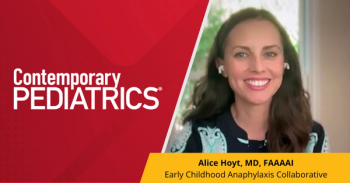
- Consultant for Pediatricians Vol 8 No 5
- Volume 8
- Issue 5
Drug-Induced Urticaria in a Teenager
For 2 days, a 17-year-old boy had a widespread pruritic eruption that involved the trunk and extremities but spared most of the face. Many of the lesions were annular, and they would appear and resolve within 1 day. The patient denied shortness of breath, difficulty in swallowing, and periorbital swelling.
For 2 days, a 17-year-old boy had a widespread pruritic eruption that involved the trunk and extremities but spared most of the face. Many of the lesions were annular, and they would appear and resolve within 1 day. The patient denied shortness of breath, difficulty in swallowing, and periorbital swelling.
Two days before the onset of the rash, the teenager had started therapy with extended-release amoxicillin (1000 mg) with clavulanate (62.5 mg), 2 tablets every 12 hours, for acute sinusitis. He had been treated previously with lower doses of amoxicillin without incident.
Physical examination revealed innumerable round, pink to pale red wheals. Mucous membranes were normal, and vital signs were stable. A diagnosis of druginduced urticaria appeared likely.
The patient was instructed to discontinue the antibiotic and contact his primary care physician for alternative therapy. He was treated with oral cetirizine, 10 mg/d for 10 days. The eruption resolved 2 days after cessation of the amoxicillin and institution of antihistamine therapy.
Articles in this issue
over 16 years ago
Adolescent Confidentiality: Where Are the Boundaries?over 16 years ago
Erythema Ab Igne From a Laptopover 16 years ago
Caudal Regression Syndromeover 16 years ago
Boy With Annular, Asymptomatic, Flesh-Colored Wrist Lesionover 16 years ago
Neuroblastoma in a Child With Persistent Hip Painover 16 years ago
Antifungals for Tinea Corporis: When to Choose an Oral Agentover 16 years ago
What is the cause of this boy's perioral dermatitis?over 16 years ago
Toddler With Decreased Appetite and ActivityNewsletter
Access practical, evidence-based guidance to support better care for our youngest patients. Join our email list for the latest clinical updates.








